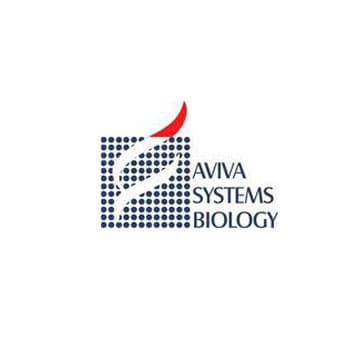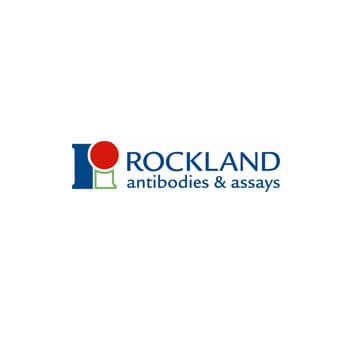
Supplier:
Aviva Systems Biology Incorporatedhuman IL-1a ELISA kit (48 Wells)
IL-1? and IL-1? are structurally related polypeptides that show approximately 25% homology at the amino acid level (2). Both are synthesized as 31 kDa precursors that are subsequently cleaved into proteins with molecular weights of approximately 17.5 kDa (4, 5). Neither IL-1? nor IL-1?contains a typical hydrophobic signal peptide sequence (6 - 8), but evidence suggests that these factors can be secreted by non-classical pathways (9, 10). A large proportion of IL-1? is retained intracellularly in its precursor form (3). A portion of this unprocessed IL-1? is transported to the cell surface and remains associated with the cell membrane (1, 3, 11). The membrane-bound, unprocessed IL-1? is apparently biologically active, acting in a paracrine fashion on adjacent cells having IL-1 receptors (1, 3). The precursor form of IL-1?, unlike the IL-1? precursor, shows little or no biological activity in comparison to the 17.5 kDa processed form (10 - 13). Intracellular IL-1?consists exclusively of the 31 kDa precursor form (5). Extracellular IL-1? consists of a mixture of both unprocessed and mature IL-1?. These results indicate that processing takes place subsequent to secretion and is not tightly coupled to secretion (5, 9, 10,14). The specific protease apparently responsible for the processing of IL-1?, designated interleukin1?-converting enzyme (ICE), has been described (14).
IL-1? and IL-1? exert their effects by binding to specific receptors. Two distinct receptor types have been isolated that bind both forms of IL-1. An 80 kDa membrane bound receptor protein, IL-1 receptor type I (IL-1 RI), has been isolated from T cells, fibroblasts, keratinocytes, endothelial cells, synovial lining cells, chondrocytes, and hepatocytes (1, 3, 15). IL-1 RI has been cloned from mouse and human cells (16) and found to be a member of the Ig super family. A second type of IL-1 receptor, IL-1 receptor type II
(IL-1 RII), has been found on B cells, neutrophils, and bone marrow cells (1, 3). This receptor has an apparent molecular weight of about 68 kDa and is also a member of the Ig super family. The two IL-1 receptor types show approximately 28% homology in their extracellular domains, but differ significantly in that the type II receptor has a cytoplasmic domain of only 29 amino acid residues, whereas the type I receptor has a cytoplasmic domain of 213 amino acid residues (1, 16). In general, IL-1? binds better to the type I receptor and IL-1? binds better to the type II receptor (1). At present, the mechanisms involved in the transduction of the signal initiated by binding of IL-1 are not well characterized (1). IL-1 possesses a wide variety of biological activities. It has been shown to induce prostaglandin synthesis in endothelial cells and smooth muscle cells (17, 18). In the liver, IL-1 initiates the acute phase response resulting in an increase in hepatic protein synthesis and decreased albumin production (19).
For the quantitative determination of human interleukin 1 alpha (IL-1?) concentrations in cell culture supernates, serum, and plasma.
Principle of the assay: This assay employs the quantitative sandwich enzyme immunoassay technique. A monoclonal antibody specific for IL-1? has been pre-coated onto a microplate. Standards and samples are pipetted into the wells and any IL-1? present is bound by the immobilized antibody. Following incubation unbound samples are removed during a wash step, and then a detection antibody specific for IL-1? is added to the wells and binds to the combination of capture antibody- IL-1? in sample. Following a wash to remove any unbound combination, and enzyme conjugate is added to the wells. Following incubation and wash steps a substrate is added. A colored product is formed in proportion to the amount of IL-1? present in the sample. The reaction is terminated by addition of acid and absorbance is measured at 450nm. A standard curve is prepared from seven IL-1? standard dilutions and IL-1? sample concentration determined.
Prices direct from Aviva Systems Biology Incorporated
Quick response times
Exclusive Absave savings/discounts
Applications
ELISA
Reactivities
Hum
Applications
ELISA
Reactivities
Hum
Applications
ELISA, WB
Hosts
Mouse
Applications
IHC
Hosts
Mouse
Latest promotions
Buy any polyclonal or monoclonal antibody from our extensive range of pre-made antibodies and for a limited time only receive a $50 discount!(T&C apply:...
New brilliant antibodies, and new lower prices!For flow cytometry reagents in general, \"bright is better.\" The violet-excitable BD Horizon™ BV421 and...
10% Discount on 2 Rabbit Polyclonal Antibody Service. With over 20 years experience, SDIX has developed into the premier US custom antibody producer,...
For the past decade scientists have extensively used ATS secondary toxin conjugates to make their own targeted toxins for in vitro use.The ability to combine...
We're so sure that you'll prefer Cayman Assay kits over your present brand that we're willing to give you a free assay kit to prove it!
Did your supplier increase the price of Fetal Bovine Serum? Did they substitute the US Origin with USDA? Well say no more! Innovative Research is still...
Bulk Cytokines with Custom Vialing.20 - 50% off cytokines, growth factors, chemokines and more...For a limited time Cell Sciences is offering substantial...
Are you planning to have a customised antibody made for your research?Since 2000, Everest has been producing a catalog containing thousands of affinity...
Top suppliers
Agrisera AB
11 products
Biotrend
Biosensis
969 products
ABBIOTEC
3011 products
SDIX
1 products
Spring Bioscience
2291 products
Cell Signaling Technology
4976 products
Rockland Immunochemicals, Inc.
7592 products
Boster Immunoleader
1533 products
OriGene Technologies Inc.
5281 products
Maine Biotechnology Services
227 products
BD (Becton, Dickinson and Company)
1 products
ABNOVA CORPORATION
Randox Life Sciences
1502 products










